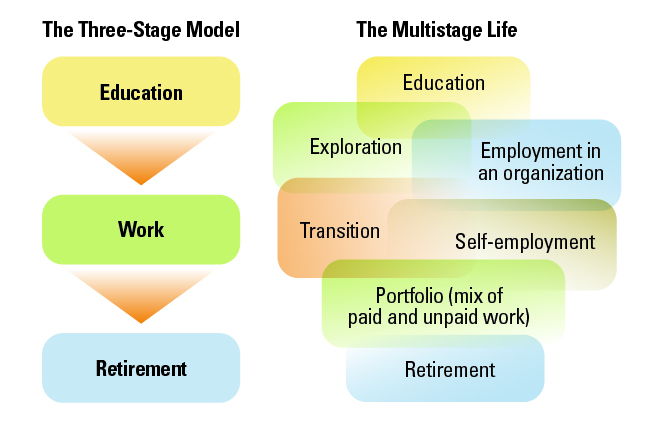Agora que passou o hype e que as carpideiras já se recolheram, acrescento o meu comentário sobre o relatório do estado da nação publicado pela Fundação José Neves.
Começo por este trecho que encontrei em “Carlos Oliveira. "Temos empresas demasiado preocupadas com o Estado, com os apoios, com os incentivos"” (BTW, este título remete-me para uma série de postais publicados aqui no blog ao longo dos anos, como este: “O by-pass” ao estado e ao país):
O que faz o governo de turno quando as empresas (como a Sonae, ou a Aquinos) não podem suportar os salários mínimos? Lança um apoio. Recordar “No país do Chapeleiro Louco (parte II)” em 2022, ou “Acham isto normal? Ou a inconsistência estratégica! Ou jogar bilhador como um amador!” em 2009. Recordo “Aspirar por objectivos sem ter coragem para a disciplina que requerem”.
O trecho acima faz-me voltar ao postal da semana passada “Competitividade sem competitividade? Mas o que é ser competitivo?” e à figura:
Enquanto escrevo estas linhas, mão amiga envia-me pelo Twitter este artigo “Grandes marcas de calçado desportivo desviam encomendas da Ásia para Portugal”. Isto é mau? Claro que não, claro que é bom ponto.
No entanto, volto ao tema dos “flying geese”:
Em “The "flying geese" model, ou deixem as empresas morrer!!!” é possível ver o exemplo da história do sector do calçado na cidade de St. Louis nos Estados Unidos.
Um país com níveis de produtividade superior não pode ser construído com base em sectores competitivos, mas com baixa produtividade.
Estão a ver a consequência imediata desta conclusão? Mata o que se segue:
Este tweet é representativo de parte das conclusões do referido relatório. Se os empresários e os trabalhadores tiverem mais qualificações as empresas alcançarão níveis de produtividade superior. Mais qualificações não permitem mais produtividade? Claro que sim, mas são aquilo a que chamo as melhorias de engenheiro. Recordo de 2009 “Actualizem o documento por favor”.
A produtividade é um rácio entre entradas e saídas, ou um rácio entre os recursos utilizados e o valor gerado, como ilustro em “Acerca do Evangelho do Valor”:
Quando o relatório refere:
“e não há produtividade sem qualificações, pelo que é essencial apostar na formação ao longo da vida, na reconversão e aquisição de competências.
...
Há ainda o problema das qualificações dos gestores, em que quase não se tem visto investimento, com o país a apresentar a maior percentagem de empregadores que não terminou O ensino secundário. "Em 2021, era o caso para 47,5% dos empregadores, praticamente o triplo da média europeia (16,4%).”
Podemos acreditar que a produtividade cresce com mais qualificações, mas esse crescimento é pouco para o que o país precisa, esse crescimento é baseado sobretudo na melhoria da eficiência, na redução das entradas. As melhorias de produtividade que o país precisa são aquelas que são baseadas em brutais aumentos do valor criado. Mais valor criado traduz-se em preços mais elevados. As melhorias de produtividade que o país precisa são baseadas no gráfico de Marn e Rosiello como explico em “Para aumentar salários ... (parte IV)”:
E isto leva-nos à lição dos finlandeses que aprendi em 2007:
"It is widely believed that restructuring has boosted productivity by displacing low-skilled workers and creating jobs for the high skilled."
Mas, e como isto é profundo:
"In essence, creative destruction means that low productivity plants are displaced by high productivity plants."
E isto leva-nos a um pedido que faço aqui no blogue há muitos anos: DEIXEM AS EMPRESAS MORRER!!!
Mais formação para os trabalhadores actuais ou futuros não resolve o problema porque o problema não está na oferta do mercado de trabalho, o problema está na falta de procura para trabalhadores mais qualificados. Mais formação dos trabalhadores num país sem procura por ela promove a emigração. Recordar o postal “Lerolero”:
“In my experience, well-educated Haitians are very easy to find as taxi drivers in the French-speaking part of Canada. An estimated 82 per cent of Jamaican medical doctors practise abroad. Seventy per cent of all inhabitants of Guyana with a university education work outside the country. North American hospitals vacuum up poor English-speaking countries like Trinidad for nurses, while in many places in the Caribbean Cuban nurses are the ones that keep the health sector functioning.”
Mais formação para os trabalhadores actuais é um tema que sigo no blogue desde a primeira década deste século com as promessas de amor de Sócrates. Recordar o tema da caridadezinha em “Caridadezinha strikes again”:
"The problem is that poverty and unemployment are not much influenced by the qualities and qualifications of the workforce. They depend, rather, on the state of demand for labor. They depend on whether firms want to hire all the workers who may be available and at the pay rates that firms are willing, or required, to offer, especially to the lowest paid."
Neste podcast, “Formação e salários: não podemos nivelar por baixo”, João Ferreira do Amaral pede estudos, sector a sector, para comparar as empresas mais produtivas de outros países com as empresas portuguesas, para retirar ensinamentos. E regresso a 2011 e a uma tarde de Verão em Guimarães a fazer horas para entrar numa empresa, e ao que aprendi com mais uns nórdicos em “Acerca da produtividade, mais uma vez (parte I)”. Comparar sector a sector é, inconscientemente, assumir que as saídas de cada empresa são semelhantes e que as diferenças estão na forma de gerir as entradas para produzir as saídas. O que os nórdicos me chamaram a atenção é que não faz sentido comparar a produtividade de quem faz sapatos que saem de uma mini-fábrica-ateliê a 600 euros o par com quem faz 2000 pares de sapatos por dia a 25 euros o par. Recordo de 2010, “As anedotas”.
Percebo que a Fundação José Neves e outras entidades se foquem na formação porque é algo que se pode planear e porque é algo que agrada a uma vasta fauna de partes interessadas instaladas no terreno e habituadas a viver da formação.
Então quem vai dar formação aos empresários? Daniel Bessa? Alguém de entre estes outros 24 cromos?
Deixem os empresários que estão a trabalhar em paz. Saúdem o seu esforço. Concentrem-se no que chamo o mastim dos Baskerville. Concentrem-se nas empresas e nos empresários que não existem. As melhorias de produtividade que o país precisa dependem das empresas e dos empresários que não existem. Recordo “Empresários e escolaridade ou signaling”.
Por fim, volto ao exemplo irlandês. Acredita que o brutal salto de produtividade na Irlanda foi conseguido à custa dos empresários irlandeses? Se acredita que sim, pense outra vez. Recordo, “Tamanho, produtividade e a receita irlandesa”.
Lembre-se do mastim dos Baskerville.
































